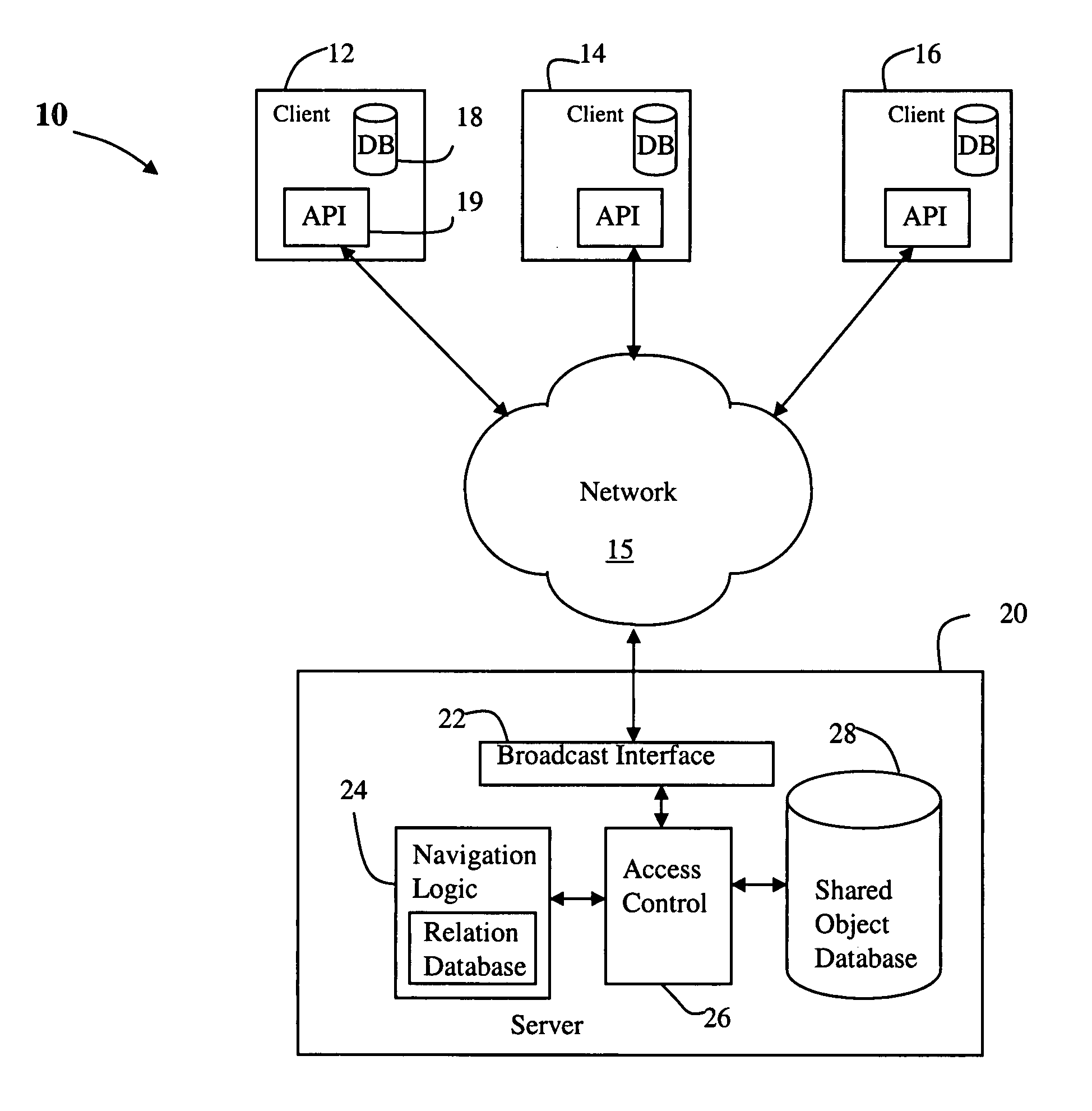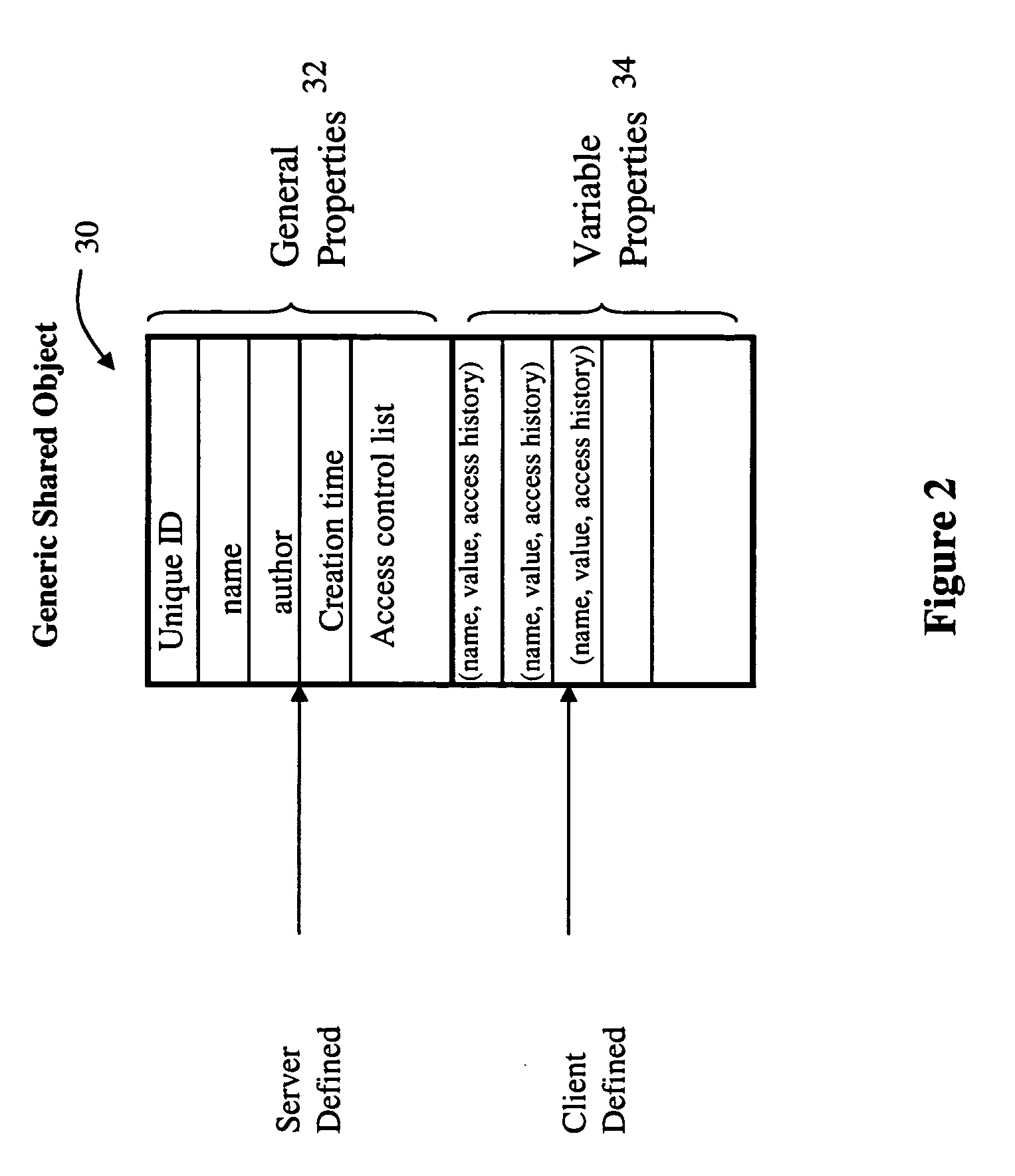Method and apparatus for persistent real-time collaboration
a real-time collaboration and method technology, applied in the field of collaboration systems, can solve the problems of creating data inconsistencies, unable to enable individual users to access data outside of web-conferencing forums, and users' difficulty in picking up a discussion thread where it was left off, so as to achieve efficient control of asynchronous behavior
- Summary
- Abstract
- Description
- Claims
- Application Information
AI Technical Summary
Benefits of technology
Problems solved by technology
Method used
Image
Examples
Embodiment Construction
[0023]FIG. 1 illustrates a network 10 in which the present invention may be implemented, including a server 20 coupled to a set of clients 12, 14 and 16. For the purposes of this application, the clients and the server communicate over a network 15 which may be any type of interconnecting network, including the Internet or a Local Area Network. According to one embodiment of the invention, the server 20 is a collaboration server that enables both real-time conferencing and content management. Thus, client applications can connect to the server to share data and collaborate in real-time. The server allows fine grained sharing of any type of content using generic shared objects (GSO). Each GSO holds one or more pieces of persistent information and defines a list of people who are allowed to access the information. Each GSO also represents a persistent conferencing session., i.e., if clients modify GSOs, modifications are broadcast to all the other clients on the list of the shared obj...
PUM
 Login to View More
Login to View More Abstract
Description
Claims
Application Information
 Login to View More
Login to View More - R&D
- Intellectual Property
- Life Sciences
- Materials
- Tech Scout
- Unparalleled Data Quality
- Higher Quality Content
- 60% Fewer Hallucinations
Browse by: Latest US Patents, China's latest patents, Technical Efficacy Thesaurus, Application Domain, Technology Topic, Popular Technical Reports.
© 2025 PatSnap. All rights reserved.Legal|Privacy policy|Modern Slavery Act Transparency Statement|Sitemap|About US| Contact US: help@patsnap.com



